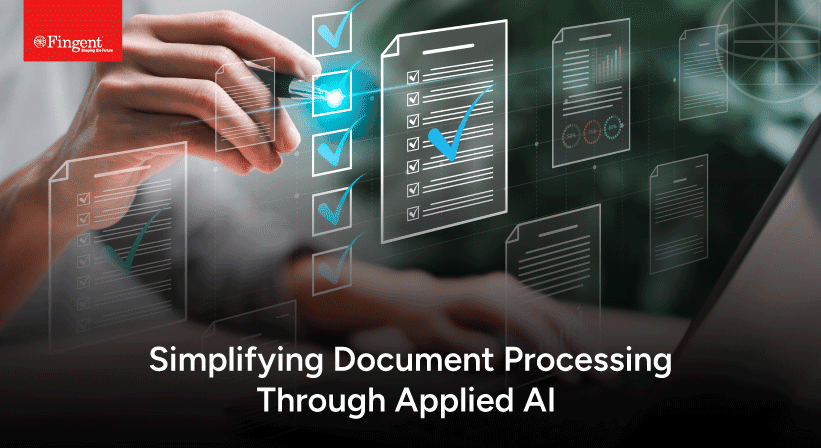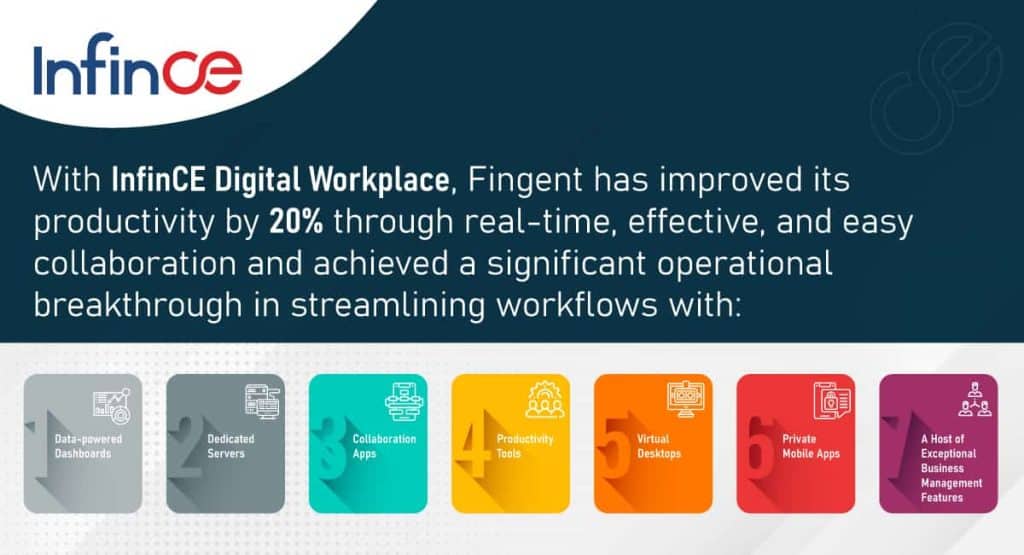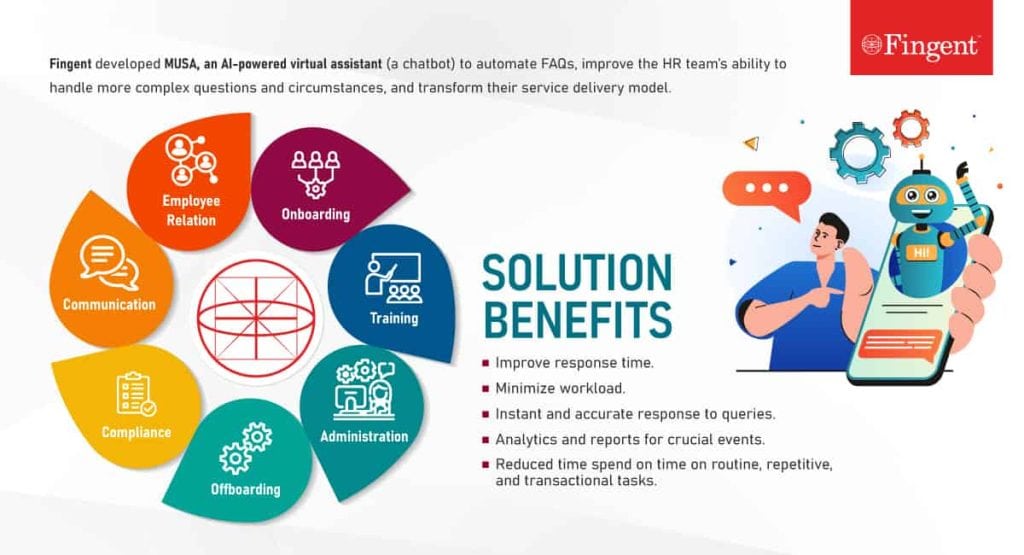5 Advanced Business Technologies You Should’nt Miss Out When Strategizing Brand Value and Competency!
The strategic significance of advanced technologies as a critical business component is recognized by enterprises like never before. Besides business modernization and cost reduction, advanced technologies allow you to compensate for labor shortages, improve brand value and competency, and expedite research and innovation processes. However, several companies jump onto the bandwagon without properly understanding the practical applications and benefits of advanced technology in their business. Only 23% of small and medium-sized enterprises (SMEs) worldwide can invest in and grow with new digital tools, indicates the World Economic Forum. This data proves why companies should analyze advanced business technology examples before adopting digital tools.
Read more: Using technology to build customer trust: Your business plan for 2022
To simplify your understanding, here’s a quick rundown of five advanced business technologies we believe will help you cope with the new business and economic environment.
- Simplifying Workflows With Cloud
- Low-code Applications
- Robotic Process Automation (RPA)
- Document Data Extraction
- AI Assistants
As these business technologies become more affordable and handy, businesses are ardently pursuing them to automate customer service, streamline workflows, differentiate products and services, and reach new markets. Depending on your budget, implementation timeline, priorities, and unique business requirements, our team at Fingent helps you build the roadmap for technology adoption.
Let’s take a closer look at the five inevitable technologies for business transformation today:
Read more: How to gain maximum value from your technology investments?
1. Simplifying Workflows with Cloud
Workflow management is a highly overlooked enterprise strategy that directly impacts productivity. Managing different stakeholders, heaps of confidential data, and a series of preset and conditional tasks manually can lead to several errors such as employees missing key steps, policy violations, compliance issues, and monetary losses. By taking your workflows online, cloud-based workflow management applications increase your productivity.
Cloud-powered workflows or workflow management tools:
- Are scalable, centralized, customizable to your needs, easy to integrate, secure, reliable, and hassle-free.
- Offer a seamless and unified collaboration interface by preventing users from toggling between different messaging apps or communication channels.
- Reduce your dependency on in-house IT team by passing on the software maintenance responsibilities to the third-party software vendor.
- Can be accessed via any authorized network (with approved access credentials), on any device, from anywhere, 24/7. This has been a huge game-changer for several companies that switched to remote operations during the pandemic.
Example of a Cloud-based Workflow Tool
Finding a cloud workflow management tool that can be customized to your company’s requirements is daunting. The platform should integrate well with your organizational processes without disrupting your existing workflow. This is where digital workplace applications like InfinCE make the difference.
With InfinCE Digital Workplace, Fingent has improved its productivity by 20% through real-time, effective, and easy collaboration. Data-powered dashboards, dedicated servers, collaboration apps, productivity tools, virtual desktops, private mobile apps, and a host of exceptional business management features enabled us to achieve a significant operational breakthrough in streamlining workflows.
Read the full case study here.
2. Low-code Applications
Gartner estimates that by 2025, 70% of enterprise applications will use low-code or no-code technologies. Digital business transformation requires pushing custom software solutions to the market at lightning speed. This demand has given rise to low-code applications that will break the technological and organizational silos of application development, automation, integration, and governance. Low-code development enables business users to bring innovative ideas to life by just dragging and dropping low-code elements through a graphical user interface.
In simple words, low-code development enables “citizen” developers or non-tech users (such as business analysts or marketers) to build dashboards and survey or contact forms faster. Professional developers, on the other hand, can leverage low-code techniques to perform more efficient tasks such as legacy application modernization or back-end integrations with improved agility and velocity.
Use Cases for Low-code Applications
- Customer engagement applications and portals
- Mission-critical applications such as ERP software, payments manager, etc.
- Data analysis applications, BI dashboards, and data management software
- Mobile apps for customer engagement
- Order processing, inventory, order fulfillment, supply chain, and accounting apps
Salesforce Lightning, Microsoft Power Apps, and Zoho Creator are some of the leading low-code applications today. SAP users can leverage the unified low-code/no-code (LCNC) solutions on SAP Business Technology Platform (BTP) to rapidly build and extend applications, and automate tasks and processes.
3. Robotic Process Automation (RPA)
Robotic Process Automation (RPA), often referred to as software robotics, is an easy-to-use software technology that allows anyone to automate digital tasks within their business processes. RPA allows users to create software robots or “bots” that can learn, emulate, and then execute rules-based business processes. According to Forrester Research, RPA software revenue is expected to reach $6.5 billion by 2025, while RPA-related services revenue could hit $16 billion in the same year.
Potential Use Cases for RPA
We offer free proof of concepts to help you understand how RPA can improve your business efficiency and customer experience. Some of our top use cases include:
- Automating discharge protocols and data management to increase HR productivity in healthcare.
- Daily retail process automation such as order processing, inventory and warehouse management, etc. to save time and resources.
- Reducing customer wait times through RPA-enabled chatbots that answer customer queries in real-time.
- Error-free, automated billing and invoices to keep your financial systems and reports up-to-date.
- HR teams can automate the maintenance of personnel data and records, streamline onboarding, and manage payroll seamlessly.
Download our white paper to learn more about how Robotic Process Automation can simplify your business operations
4. Document Data Extraction
Extracting quality data out of unstructured or poorly structured data sources and documents for further processing, migration, and storing has been a biggest obstacle in automating back office operations. If you are entering structured invoices to a robust ERP tool like SAP, your payments can be automated and system records can be generated automatically. Due to the high costs of data extraction, several businesses extract only critical information fields, for example, the payment field within an invoice. Businesses are compelled to manually extract data from other important fields, such as validating the invoice’s compliance with VAT.
AI-integrated OCR Software for Document Extraction
Optical Character Recognition (OCR) is an affordable, game-changing technology that automatically extracts data from the digital images (photos) of large files, scanned documents, and sub-titles or captions superimposed on an image. It reduces the time spent in manual data entry and extraction by automatically converting typed, handwritten or printed text into machine-readable text. AI-powered automated data extraction tools like DocuSign, Docsumo, Kofax Capture, and Amazon Textract leverage OCR technology to reduce the chaos involved in document data extraction and enable businesses to create an efficient workplace.
Our team helps customize document data extraction software that can save your time and money by eliminating transcription and transposing mistakes.
5. AI Assistants
One of the most common examples of small business automation today is the use of AI-powered virtual assistants. They can save your employees’ productivity by automating the most repeatable customer interactions, such as technical support, appointment scheduling, lead qualification, and order management. AI virtual assistants like Google Assistant and Alexa can understand and act according to your voice commands and customize responses to your queries. Understanding customer intent through natural language processing and recognition allows AI assistants to maintain a human-like conversation.
Chatbots are a popular category of AI assistants that are designed specifically for text-based channels like SMS, email, and live chat. Recent years have witnessed a rise in chatbot adoption among several business verticals, product and service lines, websites, mobile apps, customer portals, and so on. Data shows that 58% of B2B companies and 42% of B2C websites are using chatbots to make their websites and mobile apps more interactive. More than 56% of businesses believe chatbots to be driving digital disruption in their industry.
Case Study: AI Virtual Assistant for HR
Fingent’s HR team was pressed to transform their service delivery model as routine, transactional tasks affected their performance and efficiency. To solve their struggle, Fingent developed MUSA, an AI-powered virtual assistant (a chatbot) and integrated it with Fingent Hub, Fingent’s internal employee management system. MUSA is short for Multi Utility Assistant. Employees can ask MUSA any queries related to HR and IT DevOps processes at Fingent, and they’ll get answered instantly. MUSA has improved our HR team’s response time by minimizing their workload and allowing them to focus on areas requiring more attention.
Read the full case study here.
Business and Technology Are Inseparable
Gartner writes that businesses leading with technology employ advanced tech to boost their customer experience and revenue growth, have a clear understanding of their priorities, goals, and strategies, and invest in solutions tailored to their needs. Technology allows businesses to lower the walls within and between their organizations, customers, providers, suppliers, and so on. Organizations perceiving technology as a key business consideration will be able to match the pace of business change and stay relevant and competitive.
How can your company embrace growth in a new era of transformation and business technology trends? If you feel you’re getting caught in the technology maze, take a quick break to contact us.
Our consultants can simplify your technology adoption strategy based on your priorities, customer needs, financial resources, and technical requirements.
Stay up to date on what's new

Recommended Posts

18 Apr 2024 B2B
Applied AI For Document Processing
"It's becoming increasingly clear that AI is the future, and almost everything else is a sideshow." - World-renowned computer scientist Geoff Hinton AI has taken over almost every aspect of……

10 Jan 2024 B2B
AI Trends Set to Transform Businesses in 2024
In the dynamic realm of modern business, the profound impact of artificial intelligence (AI) continues to unfold, reshaping industries and redefining conventional practices. As we step into 2024, the transformative……

26 Nov 2023 B2B
Finding Success in the Aviation Business with AI
“Aviation is the branch of engineering that is least forgiving of mistakes.” - Freeman Dyson, British-American theoretical physicist and mathematician. The truth in that statement is sobering indeed. The precision……

15 Nov 2023 B2B
SAP S/4HANA Cloud Migration – All that You Need To Know!
“Our future success is directly proportional to our ability to understand, adopt and integrate new technology into our work.” – Sukant Ratnakar – CEO, Quantraz Inc. Since the dawn of its……
Featured Blogs
Stay up to date on
what's new













